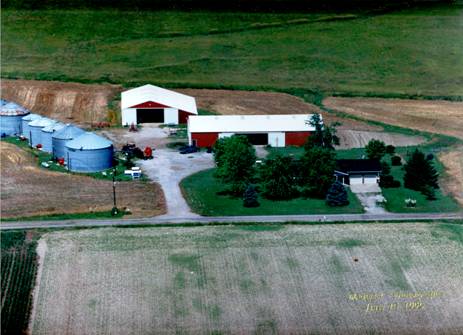How the Seidels came to be in Illinois
by Willard Seidel 8/12/98
This information is derived from things my father, George told me and from facts I remember myself. The dates mentioned are close, but may not be exact. When Dad and Uncle Bert Seidel were young men, they worked 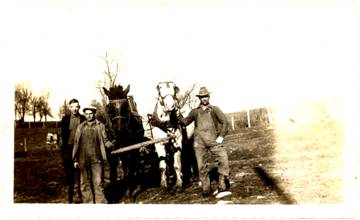 building paved state highways in the area near Flat River, Missouri. This was probably during the mid 1920's and all of their work was done with horses and mules. They owned several teams of horses and mules, which were all employed on the road work. Dad plowed and loosened the road bed dirt, or "hard-pan" as he called it, with four big horses pulling together. Uncle Bert and the other drivers, that he and Dad had employed, used the other teams to haul the loosened dirt with some type of scrapers.
building paved state highways in the area near Flat River, Missouri. This was probably during the mid 1920's and all of their work was done with horses and mules. They owned several teams of horses and mules, which were all employed on the road work. Dad plowed and loosened the road bed dirt, or "hard-pan" as he called it, with four big horses pulling together. Uncle Bert and the other drivers, that he and Dad had employed, used the other teams to haul the loosened dirt with some type of scrapers.
Picture of unknown men with a team from Seidel archived photos.
When the road work ended, they were left wondering what to do with no job and all of those horses and mules. Uncle Bert suggested that they start farming, so they rented three farms along the Meramec River near Eureka and Crescent, Missouri. This would have been 1927 or 1928, because they bought a new 1928 Chevrolet car and I am pretty sure they were already farming before purchasing the car.
Photo of Bert, Florence and Mary Seidel with George, Alma and Willard Seidel
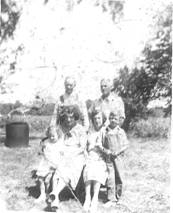 When Dad and Uncle Bert moved to Crescent from Rolla, Dad and another uncle, Uncle Ivan, moved the horses and mules on foot. They took a wagon with feed and supplies and tied the other horses behind it. At night, they would secure permission from a farmer to camp in woods along the road. Here they constructed a temporary corral, fed and watered the animals, and slept near by. I think the entire journey lasted three or four days.
When Dad and Uncle Bert moved to Crescent from Rolla, Dad and another uncle, Uncle Ivan, moved the horses and mules on foot. They took a wagon with feed and supplies and tied the other horses behind it. At night, they would secure permission from a farmer to camp in woods along the road. Here they constructed a temporary corral, fed and watered the animals, and slept near by. I think the entire journey lasted three or four days.Dad and Uncle Bert farmed and lived at Crescent several years. During this time, both Dad and Uncle Bert got married, Dad in 1930, and Bert in 1932. A short time later, my cousin, Mary White and I were born - both in Missouri. Then, I think in 1936, they lost their lease on the big main farm. This precipitated the eventual move to Illinois in the spring of 1937. At the time, they owned about seventy head of cattle and consequently had a hard time finding a new farm to rent that had enough pasture.
There was a man in St. Louis that had a lot of rental property in the city. His name was Daniel Graft and he also had this 850 acre farm near Mt. Vernon, Illinois advertised in the paper for rent. I think he aquired this farm, and its machinery too, real cheap during the Depression. Dad, Uncle Bert, and Mr. Graft all come over to look at the property and Mr. Graft said, "Why don't you boys move over here and start a Seidel colony?" Dad often recounted this story and said, "That's exactly what we did."
They rented the farm and began the move. The new farm was located about two miles south of what is now Highway 142. The road leading from the highway to the farm was mud and consequently impassible to the truck Dad and Uncle Bert had aquired to move with. I believe this truck was a used 1936 or 1937 model. Anyway, they had to hire some neighbors with horses and wagons to carry all their things that last two miles through the mud. 1936 had been a disasterous corn year in the area because of drought. The neighbors, who were helping with the move, noticed the big, fine ears of corn Dad and Uncle Bert brought with them that they had grown in the Meramec bottoms back in Missouri. These neighbors asked, "Why would you want to leave a place that produced such fine corn to come to a place like this?"
George Seidel in front of his corn.
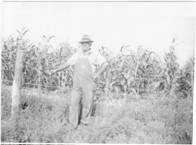
Dad and Uncle Bert initially planned to stay in Illinois only one year. The main reason they came in the first place was the availability of the large pasture. That first year, 1937, they not only used the pasture, but planted 200 acres of corn. As it turned out, the corn crop was very good that year and Dad and Uncle Bert lived the rest of their lives in the area, starting that Seidel colony which is still thriving today.
Submitted by Willard Seidel with help from his son, Jerry Seidel. If you would like to submit a story, please contact us.
Robert “Bert” Seidel farm in Illinois
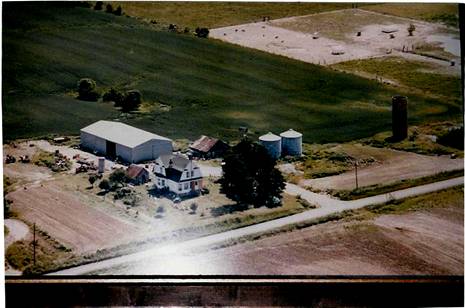
George Seidel descendant’s farm in Illinois
